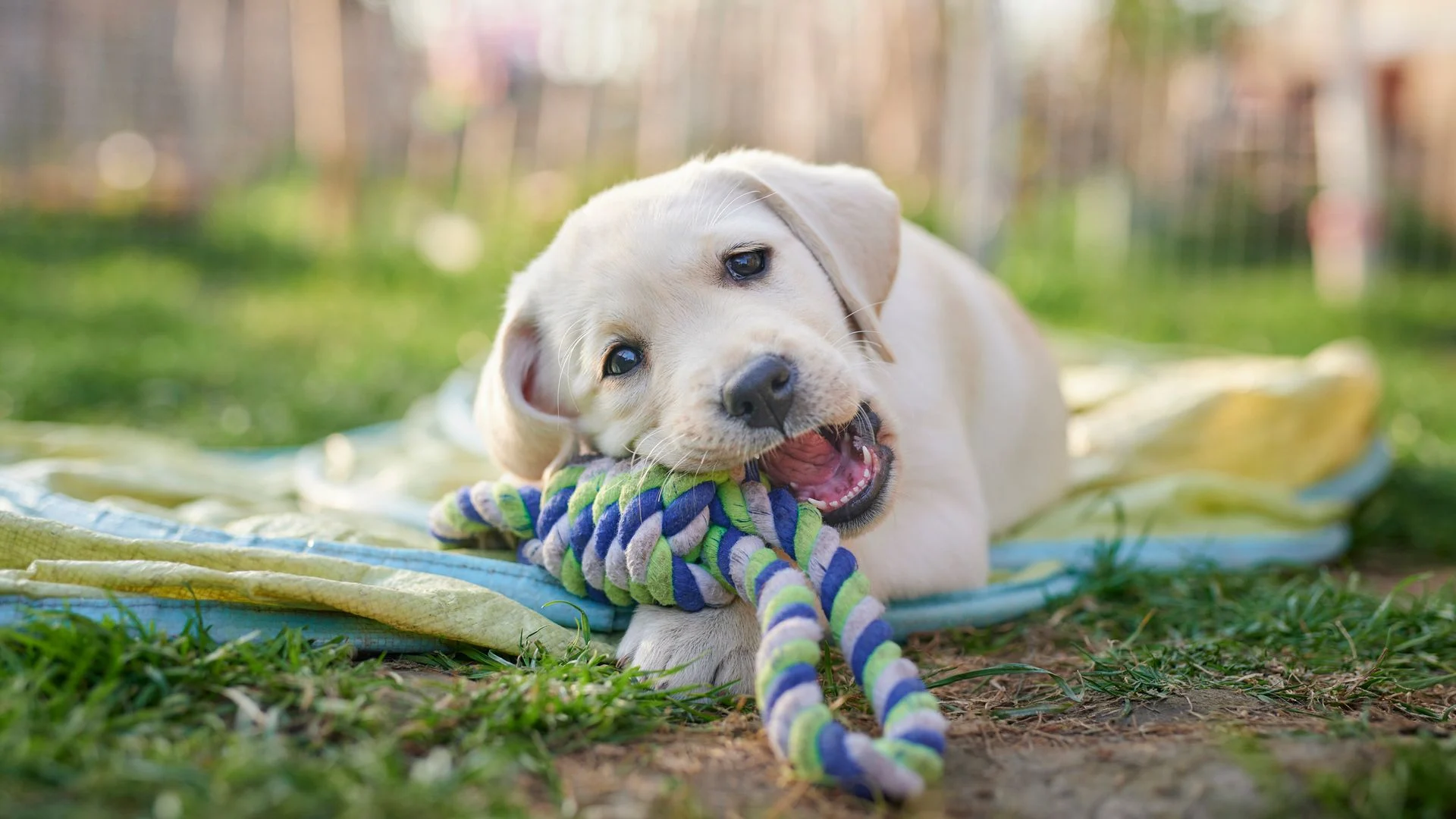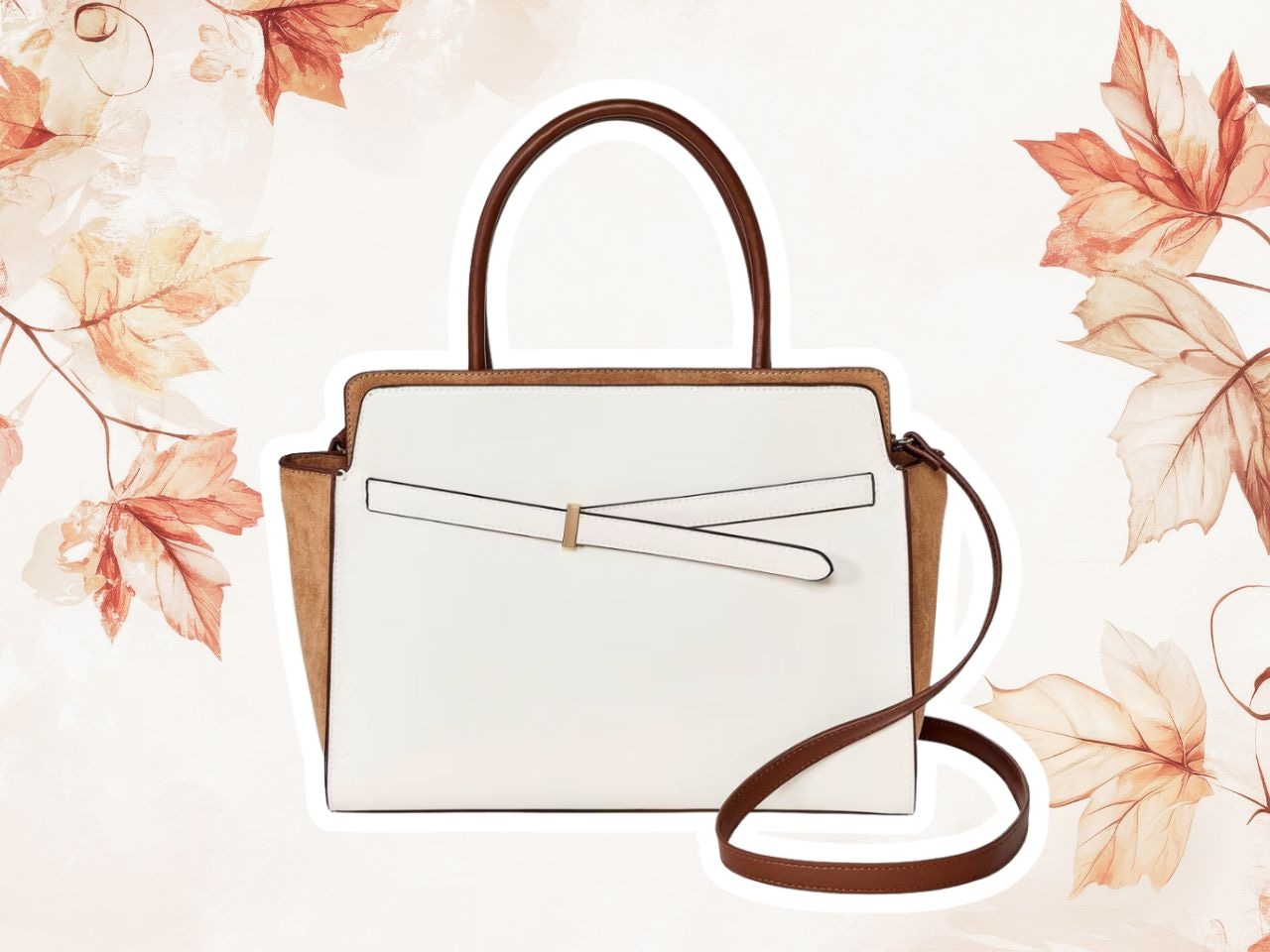Copyright hellomagazine

Bringing a dog into your home can be tough to adapt to at first, but extremely rewarding. Firstly, it's important that any animal lover does their research on everything that comes with owning a pet before picking up their furry friend. All owners must be equipped with as much knowledge as possible, because a knowledgeable owner makes for a responsible owner and, ultimately, a happy and cared-for pooch. So before you take the leap and officially become a dog parent, read through this ultimate guide for first-time pet owners. From what to buy before you bring your dog home, to which breed might suit your lifestyle best, and tips for the often challenging puppy stage in between, consider this guide your Dog Bible. Before you bring a dog into the home If you're far along the preparation journey that is required before bringing a dog into the home, then you'll likely be aware of the many things you've needed to consider in your decision-making process. Firstly, you'll need to consider which breed to go for (more on that later). It may be that you have friends who have experience with a Labrador, for example, which might influence your decision, and it'll mean you have someone to turn to for advice. It's also wise to ask yourself a series of questions while you seriously consider taking on a dog. Are you willing for your lifestyle to change? Are you willing to dedicate a big chunk of your daily life to caring for your new furry friend? Are you ready to take on the financial implications? These are all important to consider before committing. Dr Moyes, in-house vet at Burgess Pet Care, advises those who are thinking about introducing a dog into their life to look into the wider cost implications that many don't initially think to consider. "As well as the initial cost of buying your puppy and its essentials such as food, toys and bedding, you’ll need to consider additional veterinary costs to ensure they’re healthy and happy. These include: microchipping, puppy vaccinations, annual Kennel Cough vaccination, rabies vaccination (if required for travel), worming, lungworm treatment, neutering, flea treatment, annual vet check-ups and vaccination, and dental care. "It's important to consider these costs before committing to buying or adopting a dog to ensure you can look after their health properly." It's also crucial to do your research on where you get your dog from. "Whether you adopt a dog or buy one, the most important thing is to make a responsible decision, considering what needs your dog will have and whether you can meet them," says Dr Moyes. "Adopting a dog can be rewarding, while buying from a reputable breeder can allow an owner to match a puppy’s breed and temperament to their lifestyle. Remember to thoroughly research a breeder before purchasing a puppy. Selecting a breeder from the Kennel Club Assured breeder list is a good idea, and be cautious when buying over the internet or local newspapers, as these advertisements may come from a puppy farm." Which breed to go for? Now you've asked yourself the big questions and you've decided to begin the process of becoming a dog owner, you might then be wondering which breed to go for. The best way to decide which breed would suit you, your house and your family best is to assess your lifestyle and research which breeds would slot into your life easily. For example, how flexible is your work? If you predominantly work from home, for example, a dog with high exercise needs might not be a problem, as taking your dog for a walk in the mornings or even in lunch breaks might be an option. However, if you do long stints in an office or even work shift work in other industries, then you might need to consider whether committing to a dog that needs plenty of human interaction and exercise is wise. Also consider what you like doing. If you live an active lifestyle, a dog with high energy and high exercise needs would be perfect, because who doesn't want a running buddy? Breeds like Labrador Retrievers or German Shorthaired Pointers make wonderful dogs for those who live fast-paced lifestyles. Known for their friendly nature, intelligence, and boundless energy, Labradors are not only one of the most popular breeds, but also one of the most compatible when it comes to logging miles together. Similarly, Pointers are very athletic and great runners with high levels of endurance thanks to their lean and muscular build. Weimaraners or Irish Setters are also good as loyal, high-energy, so they'll no doubt love being chosen as their owner's running buddy. Meanwhile, if you're not a runner, or perhaps if you're an older owner who is looking for a dog breed that would suit retirees, for example, then breeds such as Cavalier King Charles Spaniels, English bulldogs or Dachshunds. Deciding on a breed might also be dependent on your finances; therefore, it's sometimes helpful to consider which breeds are likely to incur high vet bills, given that different breeds have different health needs. For example, the English Bulldog has a short muzzle and build, and they often face skin and breathing difficulties throughout their lifespan. Common conditions are Brachycephalic Obstructive Airway Syndrome (BOAS), skin fold dermatitis, eye disorders and joint disease. French bulldogs are similar. Dr Aimee Warner, a resident veterinarian at Waggel Pet Insurance, says that owners should be prepared for regular vet visits from an early age. "These breeds make wonderful companions. But owners need to be aware of their health predispositions so they can plan for care. Financial preparation means these dogs get the right treatment without owners facing impossible choices." New dog shopping list Once you've worked out the breed you're going to be bringing into your home, then it's time to go shopping, as there are plenty of things your new puppy or dog is going to need. Renowned dog charity, Blue Cross, shared some essentials that need to be on your list, including: a comfy bed, water and food bowls, leads, a collar with their name and owner's contact details on (this is a legal requirement in the UK), toys for calming, toys for playing, a crate, poop bags, and a harness. There are other ways that you can puppy-proof your home (even renters, who are often restricted on the changes they can make to where they live). It's worth considering the property you live in and whether it's practical to house a dog. For example, if you live in a home that has a wide, open-plan layout, this might pose potential problems if a dog becomes overexcited, or if the owner wants to restrict which parts of the home dogs can go into. Chris Maxted, director of retractable dog gate supplier Dog-G8, previously told HELLO!: "They're not always the most practical choice for dogs, especially if you have a young family with children. Excitable dogs can quickly become overwhelmed in large, open spaces, and things like hot ovens, sharp corners, or staircases can become safety concerns." However, he advises that it can be overcome with the right equipment. "A retractable indoor gate offers a simple way to set flexible boundaries without making permanent changes to the space. It's especially useful for safety areas like the kitchen or stairs, helping to prevent accidents and giving you more control during busy times of day." Dr Moyes agrees, and told HELLO! that it's important to make our home puppy-friendly by removing anything that could be harmful, such as loose wires or cables. "Securely store away chemicals or cleaning products and cover pieces of furniture that your puppy might be tempted to chew on." The first few weeks and 'the puppy blues' Ever heard of the puppy blues? It's a real thing. Georgia Brown, HELLO!'s former Lifestyle and Fashion Writer, experienced this first-hand. "Our Miniature Schnauzer, Misha, is one of the best things in our lives. Looking back on her first weeks as part of our family, however, there are so many things I wish I had known before adopting our four-legged friend. "I never thought the so-called puppy blues would hit us. We were certain that adopting Misha was the right decision, but those first few weeks were challenging - sleepless nights, chewed furniture, endless cleaning up after accidents, and unexpected frustration as our puppy learned what good behaviour meant. "No matter how prepared you are, adjusting to such a major life change takes time." It's an often challenging journey that many dog owners face, but definitely one that pays off. Fortunately, there are plenty of experts to turn to. When it comes to your puppy biting, you might be feeling at a loss on what to do. Help is on hand! Siobhan Harvey, expert dog trainer and founder of The Good Dog Collective, says that there are a number of reasons why our puppies may bite. She cites overstimulation, learning what different things and materials feel like, teething, or communicating that they're not comfortable with what you're doing to them as some of the main reasons. She also notes, however, that it isn't as worrying as it may seem at first and that puppies need to bite while they're little ones. Siobhan points out that the different reasons for biting necessitate different responses; for example, overstimulation might overexcite them, which might mean you should shorten the length of their vigorous play sessions or keep them in a puppy pen when overaroused. Most importantly, your attitude to resolving the issue should be calm: "This isn't a punishment, it's a safe space for them to let their adrenaline levels settle," she adds, "and crucially they are not able to continue practising biting on you." Ongoing care and training The Blue Cross advises that taking your pup to a training class is a better option than training at home. "The trainer can give you hints and tips to help you effectively train your dog, and will likely offer advice you may not have thought of." They add: "Blue Cross only recommends taking a class where the trainer uses modern science-backed training methods, which focus on rewarding a dog using praise, food and play for doing well rather than punishment when they don't get it right. "Dogs are far more likely to repeat their good work when you make it clear they’ve done well, and positive training is a great way of building their trust in you and their confidence in themselves." Another factor to consider is how to handle leaving your dog home alone. Georgia explained: "While we do our best to make sure [our dog] has always got someone at home or is taken to a family member who can look after her if we can't, there will inevitably be times when she does have to be left for a few hours alone." Ross Hallifax, from Purely Pets, is an expert in the field who previously shared his top tips with us on how to make sure leaving your dog behind is done safely, with minimal anxiety and, perhaps most importantly, legally. "A pet's natural instinct is to be with its owner at all times. Ideally, you'll take action to prevent your dog from developing separation anxiety and get your dog used to being away from you in the first place," says Ross. "But for dogs who aren't used to this, try and get them used to spending time without you before you go away to ease their anxiety while you're gone." While popping to the supermarket for an hour or so with your dog at home alone is typically not a problem, if you're going abroad and leaving your pet behind for days on end, you must find someone you trust to watch over them. Not only is this sensible, ethical and beneficial to the owner and pet, but it's also the law. As stated in the Animal Welfare Act, penalties for violating this rule can include fines, imprisonment for up to five years, and disqualification from owning animals. Purely Pets also recommends keeping your dog in their own environment if you're heading abroad, with a trusted sitter there with them. "Dogs will generally feel more at ease in a familiar environment. If you manage to find a responsible adult who is familiar with your dog, try to encourage them to pet-sit at your home rather than theirs." Health and safety basics Keeping your dog healthy and safe will likely be your highest priority, so it's important to be aware of the risks and potential hazards they can face. Ultimately, regular vet checks, exercise, vaccinations and a healthy diet are the main pillars to keep your pet healthy and thriving, but there are other things to be aware of too. Dr Moyes told HELLO!: "Always register your puppy with a vet as soon as you can. They will check their general health and discuss vaccinations and preventative treatment to keep disease, fleas and worms at bay. It's wise to arrange pet insurance for your puppy to help cover the cost of future vet bills. This could save you thousands of pounds if your pet becomes sick or injured. "In 2016 new legislation made microchipping your dog a legal requirement, stating that all dogs must be microchipped and registered by the time that they are eight weeks old. In England, you can be fined up to £500 if your dog is not microchipped." If you've never owned a dog before, you might not be aware that some foods are poisonous to dogs and must be avoided at all costs. For example, chocolate, grapes, certain nuts and avocados are all foods that need to be kept well away from your dog's diet. Find out why and see the full list of what to avoid. Speaking of diets, it's important to consider your dog's weight. A report in The Guardian stated that 50 per cent of dogs and 43 per cent of cats in the UK are overweight, but some breeds are more susceptible to carrying extra weight than others. Vet Nurse Rachel Garbutt from Butternut Box says: "Obesity in dogs is defined as a body condition score of 6/9 or higher, and it’s not just a cosmetic issue; it has serious physiological consequences." Dr. Suzanne Moyes, who recently partnered with the dog nutrition experts at Green Pantry, previously shared advice with HELLO! on how to prevent dog obesity. The key things are a healthy, balanced diet plus plenty of exercise. "Properly balanced nutrition is one of the most effective ways to help a dog maintain or reach an ideal weight. Often, simply reducing their daily calorie intake by 10 to 20 per cent can make a noticeable difference. We know how much our four-legged friends love their treats (and why shouldn't they!), but the key is to cut back on the amount they get each day and swap them for healthier, low-fat alternatives." Tips for building a happy and healthy relationship As mentioned before, attending training sessions with your pub is an excellent way to bond with them when you welcome them into your family. Not only that, but spending quality time, feeding them, grooming them and walking them are all surefire ways to let your dog know that you care about them and love them. But how can you tell when your dog is happy? There are a few tell-tale signs. Pet Plan notes that when a dog wants to play, following you around and even having the 'Zoomies', then they're clear signs that your dog is very happy. "Zoomies – the random bursts of energy where your dog sprints around in circles or zig zags at full speed – are a sure sign of a happy, excited pup. Known more formally as frenetic random activity periods (FRAPs), these high-octane moments are your dog’s way of letting loose and expressing their delight." Just like humans, dogs use social cues with their owners and other dogs to communicate how they feel about their surroundings. If you have a happy dog, they will want to spend plenty of time with you and will have the Zoomies or do their best wriggle dance in front of you to show you they love you. Not only that, but if they show you their belly, climb on you, and generally never leave you alone, you're doing a stellar job as a pet owner.



